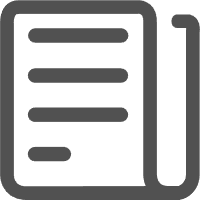Ensure the equipment is in good condition, with no deformation or runout on the spindle, firmly secured, and free of vibration.
Check the saw blade for any damage, verify that the teeth are intact, the blade is flat and smooth, and ensure no other abnormalities are present to guarantee safe use.
During installation, ensure the arrow direction on the saw blade matches the rotation direction of the equipment spindle.
During installation, keep the spindle, chuck, and flange clean. Ensure the inner diameter of the flange matches the inner diameter of the saw blade, and the flange and blade are tightly connected. Install the positioning pin and tighten the nut. The flange's outer diameter should be at least 1/3 of the saw blade's diameter.
Before starting the equipment, ensure safe operation with a single operator, and run a test with a short cycle to check if the machine is running correctly, with no vibration. After installing the saw blade, run it empty for a few minutes to confirm there is no slipping, swaying, or bouncing before beginning normal operation.
During operation, ensure the workpiece is securely fixed, and the profile is positioned in the correct cutting direction to prevent abnormal cutting. Avoid applying side pressure or curved cuts, and ensure smooth feeding to prevent blade impact, which could lead to blade damage or workpiece ejection, resulting in accidents.
If abnormal noise, vibration, rough cutting surfaces, or unusual odors are detected during operation, immediately stop work, check the issue, and resolve it to prevent accidents.
Do not feed too quickly when starting or stopping cutting to avoid tooth breakage or damage.
When cutting aluminum alloys or other metals, use specialized cooling lubricants to prevent the saw blade from overheating, which may cause dull teeth or other damage, affecting cutting quality.
Ensure the equipment's chip removal slots and dust extraction devices are clear to prevent blockage and ensure safe operation.
For dry cutting, avoid continuous cutting for extended periods to prevent affecting the saw blade's lifespan and cutting performance; for wet cutting, water should be used to prevent electric shocks.


 中文
中文  English
English  Pусск
Pусск  العربية
العربية  Deutsch
Deutsch  HOME
HOME PRODUCT
PRODUCT NEWS
NEWS CATALOGUE
CATALOGUE